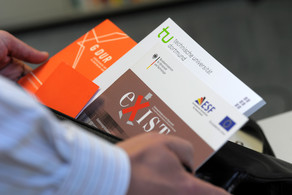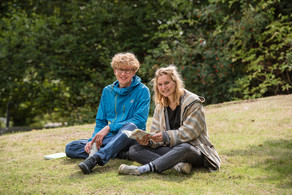Physicists of Ludwig-Maximilians-Universität München and TU Dortmund University establish new basis for further development of radiation sources
- Particle Physics
- Top News
- Research
- People
- Press Releases
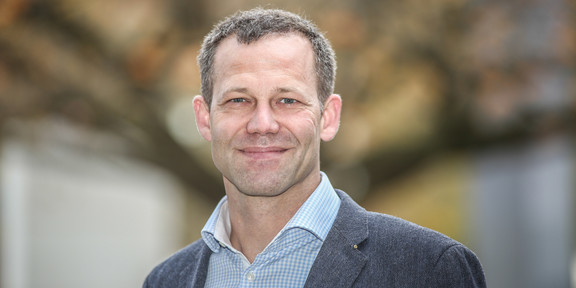
The results of the research by Johannes Wenz et al. form an important foundation for further research efforts. Previous experiments can now be refined through the newly gained capability for precise temporal control. Helml offers an illustration: “Imagine a figure skater doing a spinning jump – it lasts three seconds, and there are so many things happening. With an extremely fast shutter speed, we get a large number of extremely precise snapshots of this jump, making it possible for us to see entire fundamental processes. Transferring this to our experiment,” he concludes, “it means we ultimately aim to improve our understanding of how organic and chemical processes function. Further experiments can more precisely examine how, for example, diseased cells can be selectively destroyed.”
Particle acceleration for medicine
Such “snapshots” can be made with the help of electron beams, which are generated in particle accelerators. At TU Dortmund University’s electron storage ring DELTA, the world’s only particle accelerator at a university, electrons are brought up to nearly the speed of light. When this high-energy electron beam is deflected from its straight path with the help of magnets, the electrons release energy in the form of photons – light particles. This light emission can be used, for example, to record X-ray images. Particle accelerators like DELTA in Dortmund or the linear accelerator at the SLAC National Accelerator Laboratory in California are, however, not practical for everyday medical use because of their size. The SLAC linear accelerator is more than 3,000 meters long, and the DELTA ring has a circumference of 115.2 meters. For more than ten years, researchers have been working to bring the particle accelerator principle to a more compact size. They see promise for the radiation generated by the accelerated electrons to be used, for example, in early detection of cancer.
Up to light speed in a few millimeters
The researchers have created a new basis for this with the experiment presented in the current issue of Nature Photonics. The experiment was originally devised by Johannes Wenz and Konstantin Khrennikov at MPQ and later developed further by Dr. med. Andreas Döpp at the LMU Laboratory of Extreme Photonics (LEX). The researchers investigated the process of electron acceleration with a high-intensity optical laser in a gas. For the experimental setup, the team of experts used a novel version of the compact wakefield accelerator. Here an ultra-intense laser pulse is used to ionize a gas and capture the generated electrons in a kind of plasma bubble that trails behind. Like a surfer riding the wake of a speedboat, the electrons “surf” behind the laser pulse on the resulting plasma wave and reach nearly the speed of light within a few millimeters. Conventional accelerators require many meters to accomplish this. The accelerated electrons can now – as described above – release energy in the form of light. However, this radiation can vary in color or frequency: It can for example be shortwave or longwave, X-ray or terahertz radiation. The frequency depends on the kinetic energy of the electrons, which in turn are generated by the laser pulse. For different applications, very specific frequencies are desired. Therefore it is necessary to set these precisely, and possibly to vary them as well.
New foundation for radiation research
This is where Helml and Döpp’s experiment comes in: Where typically two pulses are used for measurements of fast processes – an excitation pulse and a control pulse – the novel setup now enables the researchers to generate two different electron energies, as well as two radiation frequencies, with just one laser pulse. In this way they can control temporal inaccuracies as well as uncertainties regarding the frequencies. With that they have opened up new possibilities for the selective study of molecular reactions. Further experiments are yet to be conducted to explore what can be done with this new foundation. The new capability to simultaneously generate different radiation frequencies in a controlled manner and to time the delivery of photons could help radiation physics research find its way into medical applications. “We are making our contribution with this step, which we hope will eventually lead to successful treatment and above all early detection of tumors,” says Assistant Prof. Helml.
Further information:
DELTA
Link to the Online-Version of the paper
About the scientist:
Assistant Prof. Wolfram Helml studied physics at the University of Vienna and did his diploma research in theoretical particle physics. For his dissertation, he switched to experimental physics research at the Max Planck Institute for Quantum Optics in Garching, where he received a doctorate with honors in 2012. With a Marie Curie scholarship from the EU, Helml subsequently spent nearly two years at the SLAC National Accelerator Laboratory in California, USA, returning afterwards to the Technical University of Munich. He then led the subproject “Laser-driven Undulator X-ray Source” in the Center for Advanced Laser Applications at LMU Munich. Since 2018, he is Assistant Professor for Accelerator Physics in the Physics Department of TU Dortmund University.



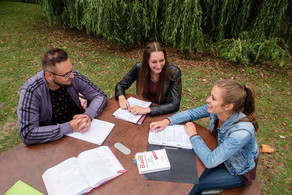
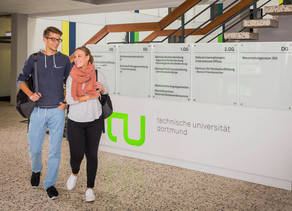
![[Translate to English:] Partner Four hands are holding the green logo of TU Dortmund University](/storages/tu_website/_processed_/1/d/csm_Partner_Nicole_Rechmann_KW_670eba0154.jpg)



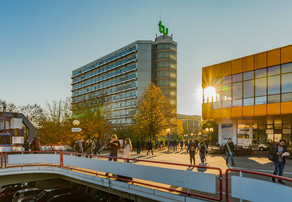
![[Translate to English:] Forschung An apparatus with tubes in a laboratory](/storages/tu_website/_processed_/0/c/csm_Forschung_Juergen_Huhn_4fa3153b51.jpg)
![[Translate to English:] Studium Five students are sitting in a lecture hall. They are talking to each other.](/storages/tu_website/_processed_/c/9/csm_Studium_FelixSchmale_dbdbfb0dd7.jpg)
